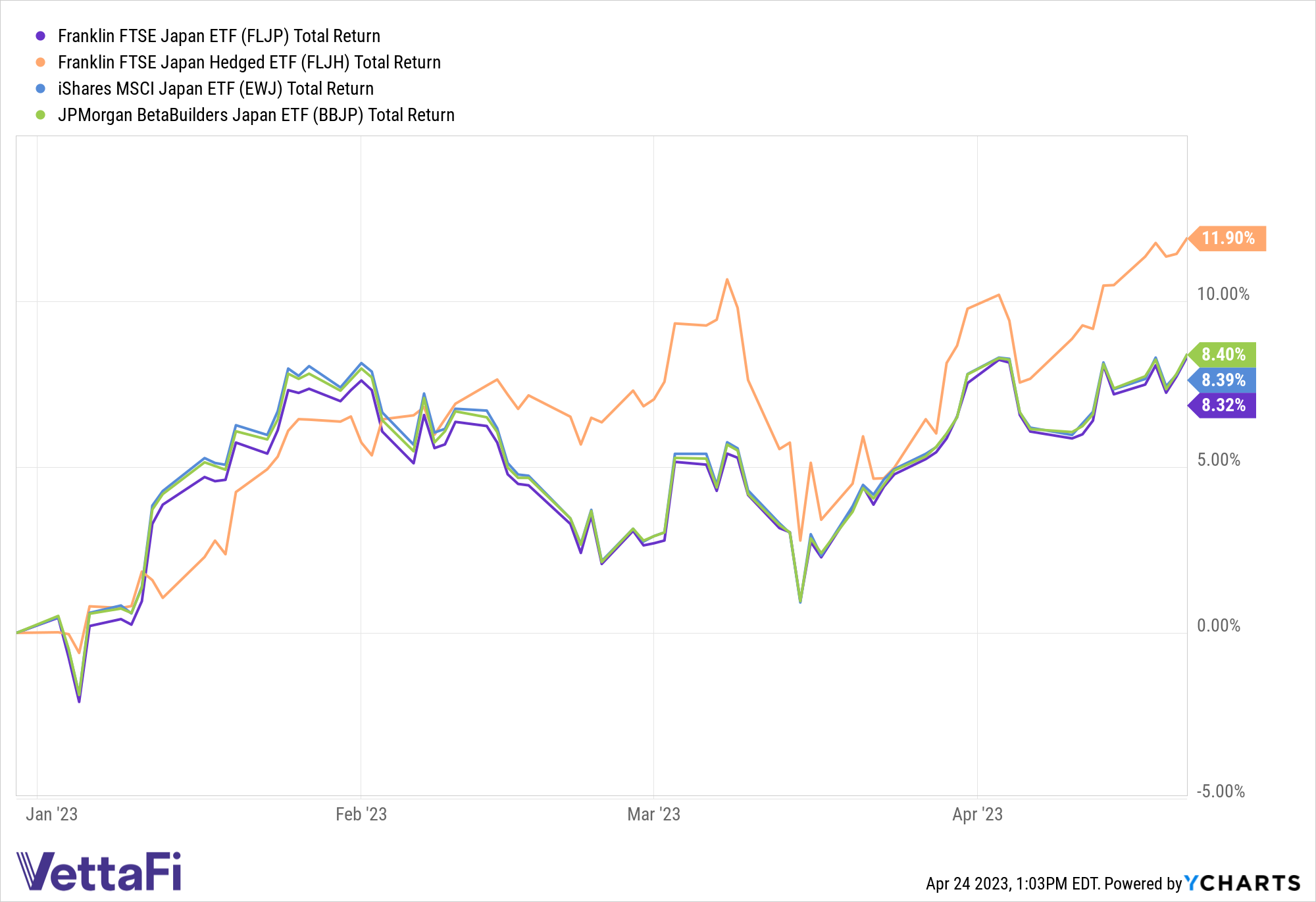Once and a while, it’s worth taking a deep dive into why a particular ETF may be rising above the others, whether that’s based on performance, volume, or as in this case, AUM. Franklin Templeton’s Japan ETF, the Franklin FTSE Japan ETF (FLJP) hit over $1 billion in AUM over the last month, not only due to increases in the underlying prices of its holdings, but also due to a notable spike in inflows in that time. Rising up YTD, investors may want to take a closer look at what’s under the hood of FLJP.
See more: “Buffett Bullish on Japan, Investors Can Follow Suit With This ETF”
As part of Franklin Templeton’s low-fee single nation ETF suite, FLJP charges just a nine-basis point (bps) fee, making it a relatively low cost option for those looking to make a long term exposure to a given country — in this case, Japan. FLJP tracks the FTSE Japan RIC Capped Index which includes both large and mid-cap Japanese firms with names like Toyota (7203), Sony (6758), and Mitsubishi (8306) prominently weighted.
Despite being known for its global manufacturing and electronics names, like Toyota and Sony, Japan’s presence in FLJP is actually led by financials holdings. According to VettaFi’s ETF sector breakdown, finance firms comprise nearly 15% of the ETF’s stocks, followed by producer manufacturing (13.3%), consumer durables (11.7%), and electronic technology (11%).
The FTSE Japan RIC Capped Index is a free float-adjusted market cap-weighted index, with its capping methodology applied quarterly such that no issuer exceeds a 25% weight, and all issuers with more than 5% weight don’t cumulatively exceed 50%. Using equity futures and equity total return swaps when needed, the ETF may swap between replication and representative approaches to the index as needed. Finally, FLJP is also able to use foreign currency contracts as needed.
What’s behind the good news for Japanese firms? There are a few factors worth noting. The Japanese government kicked off the year with a stimulus plan meant to boost the economy, while the country had its own, smaller loosening of COVID-related tourist restrictions that have invited global visitors back to the country’s bustling cities and tourist spots.
China’s larger reopening has knock-on benefits for regional economies like Japan’s, and despite tepid growth and ongoing monetary combat for the central bank, the government is taking the relatively unusual step of urging companies to increase worker wages at the annual “shunto” wage negotiations that happen each spring.
FLJP has added $62 million in fresh flows over the last five days alone, all arriving on April 20th according to VettaFi. The ETF has seen limited volatility over the last 200 days at just 14.3%, with its price sitting well above both its 200-day and 50-day Simple Moving Averages (SMAs).
With economic indicators and the Bank of Japan’s first policy meeting under its new governor coming this Friday, FLJH is in a potent position having already performed well to start the year. FLJP has returned about 8.3% YTD, just about the same as rivals like the iShares MSCI Japan ETF (EWJ) which charges a notably larger fee.

FLJP’s Japan ETF sibling, the Franklin FTSE Japan Hedged ETF (FLJH), also charges nine bps and tracks a slightly different version of the same ETF while aiming to hedge out currency issues. That approach has rewarded it a nearly 12% YTD return, making it an option to watch as well.
For more news, information, and analysis, visit the Volatility Resource Channel.
VettaFi is an independent publisher and takes responsibility for our edit staff, research, and postings. Franklin Templeton is not affiliated with VettaFi and was not involved in drafting this article. The opinions and forecasts expressed are solely those of VettaFi and may not actually come to pass. Information on this site should not be used or construed as an offer to sell, a solicitation of an offer to buy, or a recommendation for any product.

